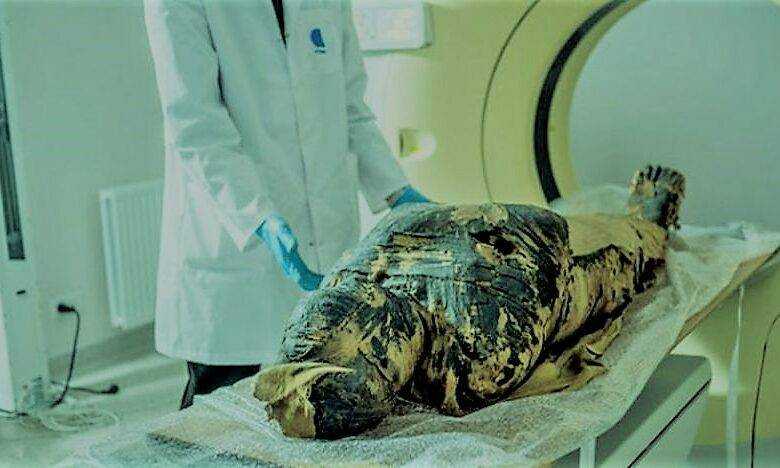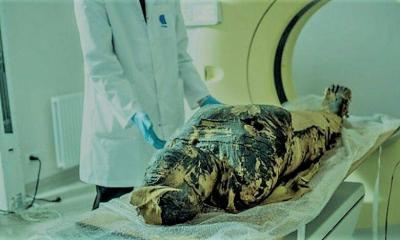After the controversy surrounding the discovery of a "pregnant mummy" in April 2021, which dates back more than 2000 years, an Egyptian expert has questioned the results of the imaging. Sahar Selim, a professor in the Radiology Department at Cairo University’s Kasr Alainy Faculty of Medicine, in a study to be published in the January issue of an archaeological sciences journal, outlined observations that led her to call for the researchers behind the discovery to conduct a new computed tomography scan of the mummy using the appropriate protocol overseen by specialists in mummy examinations.
In her study, which the journal's website summarized a few days ago and was reported by "Asharq Al-Awsat" newspaper, Selim stated that the researchers based their diagnosis on the external appearance of the pelvic mass resembling a wrapped fetus, but without revealing any anatomical formations or bones. She continued, "We welcome the authors' efforts to conduct advanced radiological studies on the mummy; however, we are not convinced of their interpretation and believe that it is impossible to definitively identify the pelvic body in question as a fetus."
She added that "it is very unlikely that the dense, nearly round compressed structure is a (fetal head) as claimed by the Polish researchers, because skull bones should have collapsed and disintegrated after death." Selim also noted that "what the researchers thought was a fetus could be visceral packages, intense embalming materials, or a calcified tumor in the pelvis."
It is worth mentioning that the Polish research team, led by Wojciech Ejsmond from the Institute of Mediterranean and Oriental Cultures at the Polish Academy of Sciences, announced the discovery of the pregnant mummy in late April. They stated then that this discovery is the first known case of a mummified pregnant Egyptian woman, which was housed in the National Museum in Warsaw. The researchers documented the discovery, stating that it was previously believed the mummy belonged to a male priest, but examinations revealed it was a woman in the late stages of pregnancy. They claimed the remains likely belonged to a woman of high social status, aged between 20 and 30, who died during the first century BCE.




